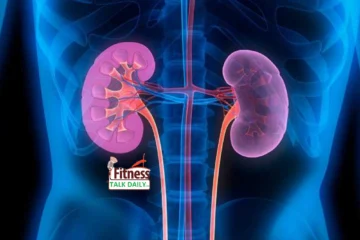When we reflect on consideration of the human frame’s complexity, it’s captivating to recognize that even the smallest structures contribute appreciably to our common fitness and mobility. The gluteal tuberosity is a prime example of this, being a small yet crucial part of the femur.
Know-how the Femur
The femur, additionally referred to as the thigh bone, is the longest and strongest bone inside the human body. It extends from the hip joint to the knee joint, forming a crucial part of our decreased limb anatomy. However, within this bone lies a frequently-omitted place – the tuberosities.
Definition and Place of the Gluteal Tuberosity
1. Definition
– The gluteal tuberosity is an outstanding bony feature determined on the posterior (back) component of the femur, that is the thigh bone.
– it’s miles characterized by using its rounded form and serves as a factor of attachment for diverse muscle mass.
2. place
– The gluteal tuberosity is mainly located at the shaft of the femur, which is the long, vital part of the bone.
– extra precisely, it lies within the place among two different essential bony landmarks: the extra trochanter and the linea aspera.
Importance of the Gluteal Tuberosity
1. Muscular Attachment
– The gluteal tuberosity performs an important function as an anchoring factor for numerous vast muscular tissues which can be worried in the movement and balance of the hip joint and the thigh.
– those muscle groups include the muscle mass of the buttocks, referred to as the gluteal muscular tissues, and the muscle tissues of the thigh.
2. Gluteal muscle groups Attachment
– The gluteal tuberosity serves as an attachment web page for the gluteus maximus muscle, the biggest muscle of the buttocks.
– The gluteus maximus is chargeable for various actions, inclusive of hip extension (moving the thigh backward) and lateral rotation of the thigh.
3. Thigh Muscle Attachment
– moreover, the gluteal tuberosity is a point of attachment for the adductor magnus muscle, located inside the inner thigh area.
– The adductor magnus muscle contributes to movements like hip adduction (bringing the thigh toward the midline of the frame) and hip extension.
4. Significance in the movement
– The muscle tissues connected to the gluteal tuberosity are crucial for preserving right posture, balance, and useful movement of the hip joint and the decreased limb.
5. Biomechanical role
– The gluteal tuberosity’s place between the more trochanter and the linea aspera creates a balanced association of muscle attachments that contribute to coordinated movement and balance of the hip joint.
Anatomical Functions of the Gluteal Tuberosity
1. Roughened surface for Muscle Attachment
– The gluteal tuberosity is characterized with the aid of its roughened or bumpy surface texture.
– This difficult texture serves a selected cause: it offers a comfy and strong attachment website online for muscular tissues and ligaments.
2. Muscle and Ligament Attachment
– The roughened floor of the gluteal tuberosity is strategically designed to house the attachment of muscle groups and ligaments.
– muscle tissues and ligaments hook up with this region, utilizing the hard texture to establish a robust connection with the bone.
3. Indicator of Muscle Forces
– The tough texture of the gluteal tuberosity provides a visible indicator of the effective forces exerted using muscular tissues and ligaments all through various actions.
– muscle mass attached to this region plays vital roles in sports like strolling, strolling, mountaineering, and different lower limb motions.
4. Dynamic actions
– sports inclusive of strolling, running, and mountain climbing require coordinated movements of multiple muscle groups around the hip joint and thigh.
– The gluteal tuberosity’s hard surface allows these muscular tissues to anchor firmly and paintings collectively to generate the pressure wished for these dynamic movements.
5. Stability and feature
– The firm attachment of muscle mass and ligaments to the gluteal tuberosity contributes to the stableness of the hip joint and the general capability of the decreased limb.
– by using presenting a secure base for muscle attachment, the tuberosity enables preserve right joint alignment and movement.
6. Adaptation to strain
– The roughened surface of the gluteal tuberosity displays an edition to the mechanical stress placed on the bone throughout weight-bearing and movement.
– The bumpy texture minimizes the chance of detachment of muscle mass and ligaments, ensuring steady overall performance even beneath strenuous activities.
Features of the Gluteal Tuberosity
1. Muscular Attachment
– The primary feature of the gluteal tuberosity is to provide a robust attachment website for muscular tissues and ligaments.
– muscles like the gluteus maximus and adductor magnus connect to this vicinity, permitting them to exert pressure and contribute to numerous moves.
2. Hip Extension
– The gluteus maximus muscle, attached to the gluteal tuberosity, is an effective extensor of the hip joint.
– It plays a tremendous function in sports like status up from a seated function, hiking stairs, and pushing the frame forward whilst taking walks or jogging.
3. Lateral Rotation
– The gluteus maximus additionally assists in the lateral (outward) rotation of the thigh at the hip joint.
– This rotation motion is concerned with movements along with turning the leg outward at the same time as strolling or retaining stability in the course of dynamic sports.
4. Hip Adduction
– The adductor magnus muscle, attaching to the gluteal tuberosity, is liable for hip adduction, which includes bringing the thigh toward the midline of the frame.
– This motion is utilized when the legs are pressed together, along with at some point of activities like squats and sure yoga poses.
5. balance and Posture
– The gluteal tuberosity’s strong attachment web page contributes to the stability of the hip joint.
– It facilitates keeping proper alignment of the thigh bone and pelvis, helping basic posture and balance at some stage in both static and dynamic activities.
6. Weight-Bearing
– The gluteal tuberosity, together with the attached muscle mass, bears a full-size portion of the body’s weight for the duration of sports like on foot, going for walks, and status.
– This weight-bearing feature is vital for dispensing forces efficaciously and reducing the threat of injury.
7. Dynamic actions
– The muscle groups connected to the gluteal tuberosity allow for a wide variety of dynamic actions, consisting of those required for various sports activities and bodily activities.
– these moves encompass actions that include jumping, squatting, lunging, and walking.
8. Mechanical version
– The robust layout of the gluteal tuberosity’s attachment website displays the bone’s version of the stresses and forces generated using muscle contractions and joint movements.
– This model guarantees sturdiness and stops muscle and ligament detachment at some stage in intense sports.
significance in Biomechanics
Injury Prevention
– With expertise in the gluteal tuberosity’s function, healthcare experts can become aware of capability vulnerabilities in the hip and decreased limb.
– Such insights resource in formulating techniques to prevent injuries by using addressing muscle imbalances, weaknesses, or incorrect movement patterns.
Optimizing overall performance
– Athletes can advantage of knowing how the gluteal tuberosity affects powerful moves, such as hip extension and rotation.
– with the aid of leveraging this know-how, athletes can quality-tune their education workouts to beautify overall performance in sports activities that depend on explosive motions and decrease limb energy.
Rehabilitation strategies
– In instances of injury or surgical intervention around the hip joint, understanding the gluteal tuberosity’s function guides rehabilitation protocols.
– Rehabilitation specialists can lay out physical games that concentrate on the affected muscle tissues and their attachments, facilitating a smoother healing system.
Improved schooling applications
– Coaches and running shoes can tailor schooling applications to bolster the muscle mass attached to the gluteal tuberosity successfully.
– This customization fosters higher biomechanics, reduces the risk of overuse injuries, and improves athletes’ usual performance.
Designing Prosthetics and Orthotics
– information on the gluteal tuberosity’s function aids in designing prosthetics and orthotics that mimic herbal movement styles and offer the most beneficial guide.
Holistic affected person Care
– Healthcare professionals can offer extra complete care by thinking about the effect of the gluteal tuberosity in remedy plans.
– This included approach ensures that patients’ musculoskeletal fitness is addressed effectively.
conditions Affecting the Gluteal Tuberosity
Just like another part of our frame, the gluteal tuberosity is vulnerable to numerous situations. Overuse, stress, and trauma can result in inflammation, ache, and pain around this region.
Stopping and coping with accidents
To mitigate the ability for accidents, it’s miles important to uphold proper form all through bodily sports. Always working towards stretching and strengthening sports that in particular goal the gluteal muscle mass can successfully provide the stableness and support wanted for the gluteal tuberosity.
1. maintaining accurate shape
– Adhering to proper shape at some stage in exercising and motion appreciably reduces the hazard of accidents.
– making sure correct alignment of the hips and decrease limbs minimizes pressure at the gluteal tuberosity and associated muscle tissues.
2. Stretching sports
– Incorporating normal stretching workouts that focus on the gluteal muscle groups enhances their flexibility.
– good enough flexibility reduces the chance of muscle imbalances and strain, selling a balanced variety of movement across the hip joint.
3. Strengthening physical activities
– carrying out centered strengthening exercises for the gluteal muscle tissues reinforces the muscle tissues’ ability to help the gluteal tuberosity.
– bolstered muscle mass contributes to higher joint balance and control during sports that contain the hip and lower limb.
4. Stability and guide
– Strengthening the gluteal muscle mass now not simplest bolsters the tuberosity but additionally aids in stabilizing the entire hip location.
– superior stability decreases the danger of surprising actions inflicting undue strain on the muscles and bones.
5. Balancing Muscle companies
– regular gluteal muscle physical games assist balance the strength ratios between special muscle companies across the hip.
– Muscle imbalances can result in compensatory movements that might strain the gluteal tuberosity and surrounding systems.
6. Save you Overuse injuries
– Strengthening sporting events, whilst executed efficaciously and moderately, can counteract overuse accidents caused by repetitive motions.
– A strong gluteal location can soak up and distribute forces greater efficiently, reducing the pressure at the tuberosity.
7. Rehabilitation guide
– For people convalescing from injuries across the hip or decrease limb, centered gluteal exercises can useful resource in the rehabilitation manner.
– Strengthening sports tailor-made to the character’s condition contribute to a sluggish go back to everyday pastime tiers.
8. Consultation with professionals
– earlier than starting any exercise routine, mainly when you have a history of accidents, it’s recommended to talk it over with healthcare or health experts.
– they can provide steering on appropriate exercises, intensity, and progression, ensuring the safety and effectiveness of your routine.
Exploring remedy alternatives
In case of injuries or pain, looking for scientific attention is suggested. Remedy methods may also encompass relaxation, bodily therapy, ache control, and, in extreme cases, surgical interventions.
Rehabilitation and healing
Rehabilitation after gluteal tuberosity-related accidents includes carefully designed software that makes a specialty of restoring strength, flexibility, and variety of movement. A based rehabilitation plan can aid in a faster and greater effective recovery.
Maintaining a healthful Femur and Gluteal Tuberosity
To make sure the well-being of your femur and its related tuberosity, it’s crucial to preserve a balanced food plan rich in calcium and nutrition D. Every day exercising that targets the decreased frame muscle tissues, coupled with the right heat-up and funky-down routines, can make contributions to typical skeletal fitness.
Conclusion
The gluteal tuberosity of the femur might be a lesser-recognized thing of our anatomy, however, its role is undoubtedly sizeable. From allowing motion to helping joint stability, this small prominence performs a critical element in our day-by-day lives.
FAQs
1. what’s the gluteal tuberosity?
The gluteal tuberosity is a bony prominence on the femur that serves as an attachment website for essential muscle mass.
2. What muscles attach to the gluteal tuberosity?
muscle groups just like the gluteus maximus and the vastus lateralis connect to the gluteal tuberosity.
3. Why is the gluteal tuberosity essential?
it’s miles important for starting up actions like taking walks, walking, and jumping, whilst additionally contributing to joint stability.
4. How am I able to prevent injuries to the gluteal tuberosity?
retaining proper form throughout sporting activities and engaging in targeted stretches and strengthening exercises can help save you from accidents.
5. What do need to I do if I revel in gluteal tuberosity-related ache?
looking for clinical attention is suggested, as remedy options range from conservative measures to surgical interventions.
6. Can bad posture affect the gluteal tuberosity?
sure, negative posture can impact the alignment of the hip and lower limb, potentially main to pressure on the gluteal tuberosity and related muscle tissue.
7. Are there precise exercises to target the gluteal tuberosity?
sure, sports like squats, lunges, hip thrusts, and leg presses can effectively target and toughen the muscle mass attached to the gluteal tuberosity.
8. Can gluteal tuberosity accidents occur abruptly or expand over the years?
Gluteal tuberosity accidents can arise due to surprising trauma, but they also can increase step by step from overuse or incorrect biomechanics.




